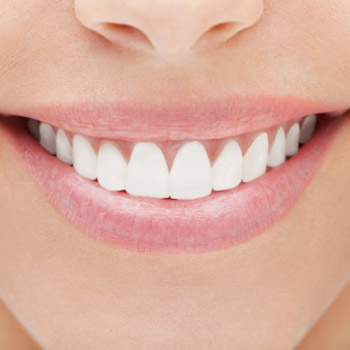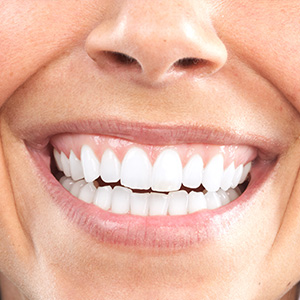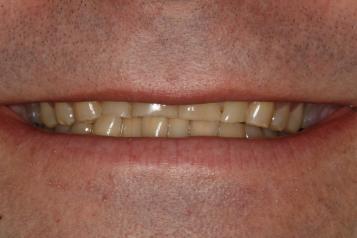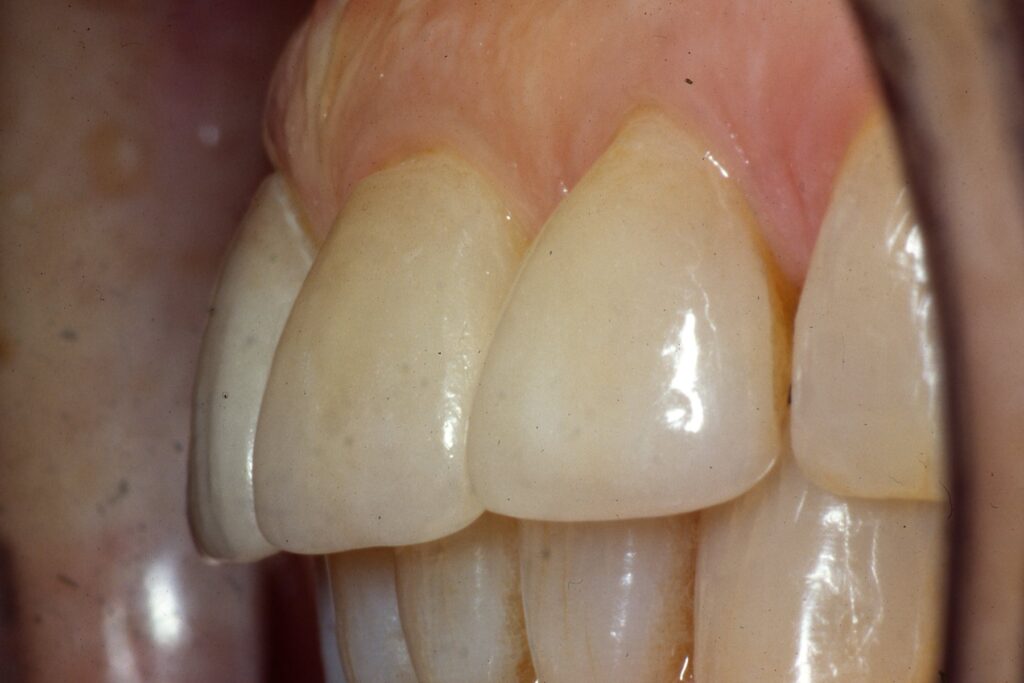Also, you may explore the website for the American Academy of Cosmetic Dentistry: aacd.com for more information about dental esthetic evaluation. Since Cosmetic Dentistry is not a recognized specialty, this organization provides accreditation for those dentists that seek to build their expertise in this area in a responsible way.
Also be sure to review the chapter of this site dealing with dental esthetics principles, dental esthetic problems and with the planning of cosmetic dentistry.
Organization of this Chapter
Basics
What we Evaluate
Appearance with Closed Lips
Appearance during Smiling
Teeth Relative to Lips – Works for You?
Other Notations during Smiling
Appearance while Laughing
Bottom Line for Dental Esthetic Evaluation
………………………………………………………………………………………………………………………..
Dental Esthetic Evaluation: Basics
When evaluating how a patient looks, first and foremost is for the dentist to have NO opinion at all – just to merely point out things that the patient might not be aware of at a conscious level. If it is a “cosmetic dentist”, you have placed yourself in their hands, esthetically, and may end up looking like THEIR visualization of “ideal”.
For example – I am an older individual. By the way – please avoid using the word “old”. The enamel of my teeth, and that of everyone else my age I know, has become more transparent – showing the color of the dentin through the enamel. My teeth appear somewhat yellowish, which is natural for my age. Now, I COULD go to a dentist and get some porcelain veneers, but I prefer not to for two reasons. First, it’s really expensive. Second, I’ll have to work hard to keep him/her from making the teeth too white!
Older people don’t have white teeth like younger people. Unless you are talking about an older rich person – THEY have white teeth. That doesn’t make it look any more natural, however. So, that movie star smile, when surrounded by an older person’s face might not be such a good look.
Curious about one of our current presidential candidates, because I have noticed his teeth relative to other candidates, I Googled “Bernie Sander’s teeth” and found a site where they look at pictures of different politicians and presidents. Very interesting to check out! Of course, a recent president has spent the most money on “his teeth” – probably over $100,000. I can’t help wondering if he ever paid the dentist!
What we Evaluate:
First, people look completely different depending on how much they open their mouth and what they are doing with their lips. For example, when someone has their lips closed they look very different from when they smile. And when they laugh it is another completely different relationship between facial structures, including the teeth. And when they sing and hit those high notes – now we really see more, and another completely different relationship.
I’ll discuss certain characteristics that we need to pay attention to, in relationship to the amount of mouth opening and the strength of the emotions expressed.
I will also draw a distinction between what is seen from the front, in contract to what is seen from the side.
The emphasis here is that the way people look doesn’t have to do just with the teeth, it is how naturally the teeth supplement or complement the rest of the facial features in a variety of different circumstances.
The Appearance with Closed Lips:
Here, from the front view, we naturally tend to notice the vertical height of the lips and the breadth of the mouth from corner to corner. From the side we notice the relationship between the nose, lips and chin in profile. There are typical standards that we might strive to achieve wherever possible with a patient, or at least we don’t want to have them looking less attractive because of something we’ve done.
For one thing, if we are restoring the facial surfaces of the anterior teeth, the lip support can be modified, either for the better or worse. This is largely seen in profile, but can be noticed in front view as well.
Lip Support
Let’s say the lip support for the patient is such that the upper lip is not on a straight line between the tip of the nose and the chin. Of course the patient may have a receded chin, but we would esthetically aim to have all four structures, nose, each lip and chin on a straight line. In a case where the patient is looking to significantly alter their profile, before any dentistry, they might even have a chin implant by a cosmetic surgeon. This can be done in cooperation with the dentist, for the final appearance of the lips is often determined by the teeth.
For example, if the upper teeth protrude too much, then the lip is pushed out in relationship to this “ideal” line. If the upper teeth are tilted inward, then their upper lip is recessed in the profile, and the thickness of the upper lip may be reduced or thinned as viewed from the front.
Dentists, particularly when doing full dentures, are intimately involved in the positioning of the upper lip and can leave the patient looking far less attractive than they could, if they are careless. I once had a full denture patient whose natural position of the ridge in the upper front was so far protruding that a normal placement of teeth would push the upper lip out far enough to be unappealing. In order to make the denture for her I had to minimize the amount of plastic inside the lip and shift the teeth lingually. It is difficult to do this and keep the retention of the denture as it should be, but with enough care it can be done, and the patient was very happy with the result. For the first time her upper lip was not protruding and did not appear stretched out.
Shortened Vertical Dimension
If the patient has ground their teeth to the point where the vertical dimension of the bite is changed – i.e. the distance from the nose to the chin is lessened – the lips will appear “pursed” as if the person was trying to kiss someone. Both lips will be beyond the nose/chin line as well, and this is not a good look. But, people that grind their teeth will often find themselves in this position. Unfortunately, rebuilding all of the teeth so the mouth is more open in occlusion is a very expensive and difficult process.
Flaring
Another thing that can cause the upper lip to protrude with closed mouth, is if the upper teeth are flared out, as if the tongue were pushing them outward and they stayed in that position. Normally, the forces of the tongue and lip balance and the teeth remain in place, but if the teeth are periodontally involved and the tongue is active, then a protruding lip can result – apparent even with closed mouth.
I had a patient whose teeth were so flared due to strong tongue action and periodontal bone loss that spaces were visible between all of the front teeth, and the lip was noticeably protruding. I had to move her teeth back inward using orthodontic procedures, and then retain them with a partial denture that was needed to replace some missing posterior teeth. The result was quite satisfactory for the patient. But, without the partial, working as a retainer, these teeth would have moved back on their own in less than a year.
The control over the width of the mouth from corner to corner is not generally in the hands of the dentist. An orthodontist who expands the upper arch in the younger person can somewhat impact the breadth of the mouth in adulthood, but the basic size of the mouth is pretty fixed. This is especially true for people who have little flexibility in their lip and cheek tissues. It is more likely that the breadth of the mouth will depend more on the muscle movement around the mouth and how it is used during smiling, for example.
The Appearance during Smiling:
Now, of course, we start to see the teeth – but how much of them we see will depends totally on the arrangement of the lips relative to the teeth, and the extent to which you contract your muscles around the mouth as you express joy.
There are certain variations, however, that are usually considered less attractive than optimum. For example, when your upper lip in smiling rises above the necks of your upper teeth, there will be a display of gum tissue, and when it is larger than optimal it is referred to as a “gummy smile”. This is not necessarily a detraction from someone’s appearance, but it can be. In any event there is little that can be done about it practically.
When the upper lip in smiling exposes just the enamel of the tooth, just to the gumline – but not revealing a significant amount of gum tissue, this is more acceptable esthetically. And the lower lip looks best when in smiling it is at the position to just uncover the incisal edges of the upper teeth. In this configuration, the entire enamel of the upper teeth is exposed during smiling, but little else, no gums above, and little or no lower incisors below. You might also open your teeth slightly in smiling and the above the lower lip see just a little dark space toward the back of the mouth, emphasizing the whiteness of the teeth above.

Also, in smiling, it is interesting to see how far back into the mouth the teeth are seen – back to the molars? Think Julia Roberts – her smile is so notoriously wide that you can see the tooth farthest back in the mouth.
Look at pictures of famous people, actors and politicians, and you’ll get a pretty good idea of what “ideal” is in most cases. On the other hand, there are exceptions. For many “regular” people and some famous people the lower incisors are seen more than the upper teeth, and maybe not much is seen of the upper teeth. This may be because of lip position, but also could be due to tightness of the lips, so they don’t flex normally in smiling. Saw a picture of Senator Ted Cruz, and this well illustrates the point.

Teeth Relative to Lips – Works for You?
Now, how should your teeth be positioned relative to your lips to make you most satisfied with your appearance? Considering that there are many actors, for example, whose teeth are not ideal, but it seems to work for them, perhaps this works for you too. Often a person’s personality and their appearance blend together over a lifetime and one complements the other. This must be considered if you contemplate making cosmetic changes to your teeth.
Other Notations with Smiling
When a person smiles, there are other observations that one might make that DO suggest some changes that would be esthetically advantageous. If there are spaces between the teeth (diastema), or the incisal edges of the teeth are flattened from canine to canine, the incisal edges are rough like a saw blade, the lower incisors are really crowded in too limited a space, the colors of the teeth or their transparencies are not natural, or not consistent and uniform across the visible area, or the contours of the teeth do not look natural in some way.

We might even do an extensive evaluation of the appearance of a person’s teeth under different lighting conditions! Under natural sunlight, or fluorescent office lighting, or nightclub lighting – the appearance of the teeth can be completely different. A true cosmetic dentist will be able to evaluate and note these differences, and decide on a compromise with the patient based on WHERE they want to look the best.
When a person smiles you can see in profile how the angulation of the anterior teeth looks, as well as the contours (roundness) of the tooth forms. If the teeth are angled outward, for example by periodontal flaring, or the teeth have been poorly restored so they look rounder than the natural contour, it will be quite obvious. A person might not be aware of this as they look from the front in the mirror, but an honest friend can help them get an idea about what they see.
The person in the photograph below was about 50 years old at the time I worked with her. The teeth are certainly NOT as white as in the pictures of the lovely young women above, but all of her teeth matched and were natural in form and consistent in color with the color of the whites of her eyes – which is a criterion that I always used.

Again, what you become aware of that is not ideal in your mouth, may be perfectly acceptable to you, or you save your money to make a significant change. To each their own.
I once met an artist and talked with him in a gallery for a minute or so. He had a low smile line, the lower incisors were visible, but I could also see the upper teeth. Clearly he had had crowns done for cosmetic purposes from canine to canine. The crowns were not very good, or I would not have noticed them! Anyway – they were porcelain crowns and had been rubbing on the lower teeth ever since he got them, and I suspect that was no more than 5 years. The abrasivity of the porcelain had ground the lower teeth down about 1/2 way – leaving no enamel on the tops, incisal edges. These softer areas had stained and the appearance, since it WAS visible with the low lip line, was atrocious. It was the fault of the dentist that he ended up this way, and it probably could have been avoided!
Appearance While Laughing:
When a person laughs, it normally requires opening the mouth widely, and now the occlusal (biting) surfaces of the teeth are seen. For a normal laugh, only the lower occlusal surfaces are visible, but with one of those tilting the head back belly laughs, or when hitting a high note while singing, even the upper occlusal surfaces are seen. How natural do the teeth look at these moments? Is it important that there be no artificial materials visible on these surfaces? To some people it is, and to others it is not.
We’ve discussed earlier and will discuss again later, the advantages and disadvantages of different restorative materials, but for the esthetics discussion it is all about your personal sensitivity, and the cultural norms.
If you are showing your occlusal surfaces less than 1% of the time in typical conversations, then perhaps you will think its fine to have gold or silver fillings visible at these times, as long as the amalgam is polished and not black. I teach every day for a couple of hours in a lecture style format, and there is often laughter during these classes, but I doubt that any student of mine has any idea how many gold crowns I have in my mouth. It’s all personal choice in the end – well, that, and the limit on your credit card.
Bottom Line for Dental Esthetic Evaluation
While dentists have the responsibility in a cosmetic case, to evaluate the patient’s appearance under a variety of different circumstances – there are still more subtle issues involved.
The dentist may have to be more of an artist and therapist to develop a cosmetic plan that truly supplements the patient’s strong points, rather than simply “hiding” their weak points behind a wall of shiny white teeth.
The esthetic evaluation is a cooperative venture between the dentist and the patient, and it’s purpose is to come up with a plan that will bring out the patient’s best traits by not distracting from the subtleties of their “look”.